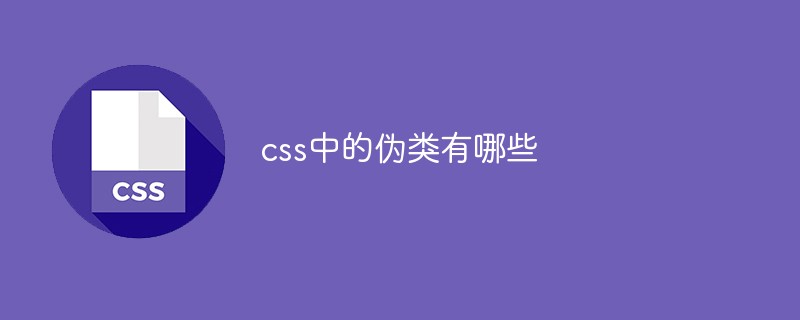
css pseudo-classes: ":active", ":any-link", ":blank", ":checked", ":current", ":first", ":first-child", " :future", ":focus", ":has()", ":host", etc.

The operating environment of this tutorial: Windows 7 system, CSS3 version, Dell G3 computer.
Pseudo-class selector (referred to as: pseudo-class) is defined by a colon, which defines the state of the element, such as click pressed, click completed, etc. The style can be modified for the state of the element through pseudo-classes. CSS pseudo-classes are used to add some special effects to selectors.
Pseudo-class list in css
| :active | :any-link | :blank | :checked | :current | :default |
| :defined | :dir() | :disabled | :drop | :empty | :enabled |
| :first | :first-child | :first-of-type | :fullscreen | :future | :focus |
| :focus-visible | :focus-within | :has() | :host | :host() | :host-context() |
| :hover | :indeterminate | :in-range:invalid | :is() | :lang() | :last-child |
| :last-of-type | :left | :link | :local-link | :not() | :nth-child() |
| :nth-col() | :nth-last-child() | :nth-last-col() | :nth-last-of-type() | :nth-of-type() | :only-child |
| :only-of-type | :optional | :out-of-range | :past | :placeholder-shown | :read-only |
| :read-write | :required | :right | :root | :scope | :target |
| :target-within | :user-invalid | :valid | :visited | :where() |
##Commonly used Pseudo-classes and their classification
#1. Dynamic pseudo-class selector
Different states use different styles.E:link
E:visited
E:active
E:hover
E :focus
2. The target pseudo-class selector
is used to match the target element of an identifier in the URI of the page. .E:target
3. Language pseudo-class selector
is used to match elements using the specified language.E:lang(language)
4. Element status pseudo-class selector
When the element is in a certain state It only takes effect when the setting is disabled, and does not take effect in the default state.E:checked
input[type="checkbox"]:checked{}E:enabled
input[type="text"]:checked{}E:disabled
input[type="text"]:disabled{}5. Structural pseudo-class selector
This one is more common and is used more frequently.:nth-child
Matches all the root elements of the document
Selects elements that have no child elements and does not contain nodes
Matches all E elements except F
The above is the detailed content of What are the pseudo-classes in css. For more information, please follow other related articles on the PHP Chinese website!